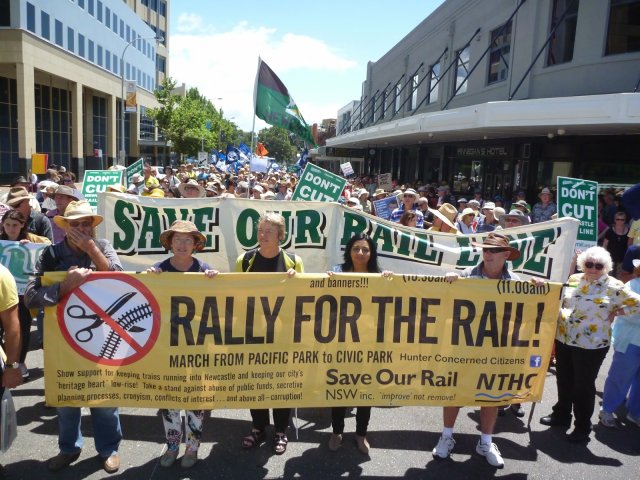
An “Act of God”, or lightning, was a key reason for the recent meltdown of Sydney’s rail network, according to transport minister Andrew Constance. He also claimed that the “dark arts of unionism” — presumably some sort of devilry — inspired rail unionists to vote to strike over pay and rosters on January 29.
Politicians may blame God and the Devil for recent transport chaos, but when the dots are joined between different aspects of the government’s transport policy the reality becomes clearer.
Last October, Fairfax media revealed that the operating budget for Transport for NSW, the agency charged with ensuring safe, integrated and efficient transport systems, was being cut by hundreds of millions of dollars. One of the “savings” was a freeze on hiring casual staff and on creating new positions.
Most people understand that underfunding means understaffing, but Constance seems to have been surprised when new train timetables, introduced to cope with the demand caused by tolled-out motorists shifting to train travel, required an extra 150 drivers.
He also seemed dismissive when new privatised bus routes and timetables in the Hunter revealed an obvious lack of local knowledge. Remember when former premier Mike Baird promised in November 2015 that Newcastle buses would not be privatised? Can privatised planners really eliminate routes and then wonder why kids cannot get to school, pensioners cannot get to the most convenient and cheapest supermarkets and people with disabilities cannot get around?
The “world class transport system” the politicians promised the Hunter has morphed into a rebadged Wickham station with half a roof. With the rail line long gone, the replacement bus, which was supposed to meet every train, has become another broken promise. Commuters wanting to continue into Newcastle can be left waiting at the Wickham Interchange for up to 20 minutes without seating or shelter for the shuttle. The hugely expensive light rail system appears to be destroying the very businesses it was supposed to save.
One promise Constance seems keen to honour is to privatise all transport services in the state within 15 years. In other words, commuters can expect to pay more for less. As motorists already pay for freeway extensions through taxes and tolls, the overall effect is to divert the transport dollar from public transport to privately owned tollways.
Rezoning transport corridors is also lucrative for privatisers. The plan to reduce the width of the Sydenham to Bankstown rail corridor and run driverless metro down a much narrower corridor allows developers the opportunity to lobby to rezone dedicated rail corridors and build high-rise apartments and office blocks. The rezoning of Newcastle’s corridor has set the precedent of allowing over-development at the expense of connectivity, integration, faster and cheaper services.
Protests at Belmont and Sydney over February 17-18 will join the dots to reveal the pattern between underfunding, understaffing, private tollways, privatisation, cannibalised services and the need for public transport infrastructure across NSW.
[Dr Steve O’Brien is a Newcastle-based sociologist and Socialist Alliance activist, and a regular Newcastle East-to-Sydney train commuter. This article first appeared in the Newcastle Herald.]
Like the article? Subscribe to Green Left now! You can also like us on Facebook and follow us on Twitter.